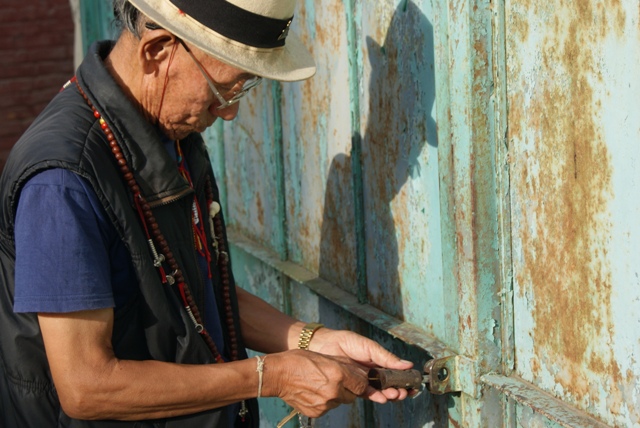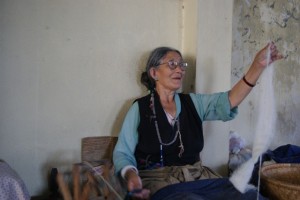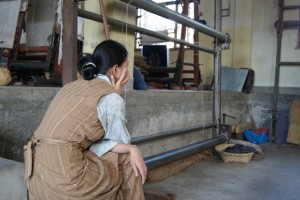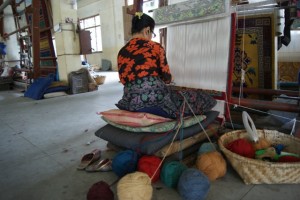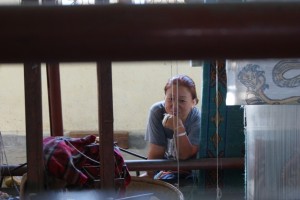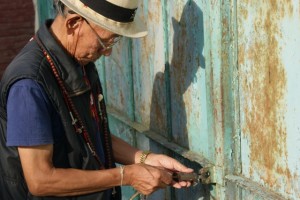The city of Patan renowned as the city of fine arts is five kilometres from capital Kathmandu. This city, also called ‘Lalitpur’ which means ‘the beautiful city’, is also the oldest one in Kathmandu Valley. With approximately 1,200 Buddhist and Hindu monuments spread across the city, including the durbar square, Patan is a World Heritage Site listed by UNESCO. The great emperor Asoka is believed to have visited the city in 250 B.C. and the majority of the inhabitants are Buddhists. A city renowned for the unparalleled skills of its craftsmen inhabitants since time immemorial, the setting up of the Jawalakhel Carpet Centre here only added to this reputation.
Following the Chinese invasion of Tibet in 1959, the Dalai Lama sought political asylum in India. Some 100,000 Tibetans too took flight with their leader. While some followed him to Dharamshala in India, others took up refugee in neighbouring Bhutan and Nepal. Those who came to Nepal were provided shelter in Jawalakhel near Patan, by His Majesty’s Government of Nepal in 1960. The refugees, for a while, subsisted on grants by international communities, notably the International Relief Programme. Among the refugees there were skilled carpet weavers who used to run their own carpet businesses in Tibet before coming to Nepal. Taking cognizance of this skill pool and its potential, the International Committee for Red Cross and the Swiss Association for Technical Assistance, now the Swiss Development Corporation, jointly set up the Jawalakhel Carpet Centre in 1960.The Jawalakhel Carpet Centre, the pioneer in the carpet industry of Nepal, is synonymous with the Tibetan refugee camp. If you are asking for directions to the centre, more than carpet centre you should ask for the ‘Tibetan refugee camp’. This is a name which has stuck despite over half a century of existence and considerable contribution to the foreign exchange earnings of the country annually. The popularity of the name is because the centre provides employment to around 500 Tibetans. The surrounding area is taken up mostly by the families of these employees. Here, they go about their daily lives trying to bring in a semblance of normalcy. Then, no country, however accommodating can replace one’s own land. No land like homeland.
At the centre, I met Tsering, a pleasant girl with a distant look in her eyes. Tsering was born at the camp and like many of her generation had a decent education – she went to school and has recently graduated from college. As she tries for jobs, she uses her time and qualification to help in the running of the centre. Armed with a ready smile and full of energy, Tsering is a graduate in commerce and chips in with the administration and day-to-day functioning. She is pally with all the employees – many of whom who came here in 1960, when the Dalai Lama fled Tibet. However, with the recent geopolitical changes in the region, shifting affiliations and swinging loyalties, life for these homeless people is not what it used to be. While the hosts were accommodating and tolerant earlier, today Tsering and those of her generation finds a gradually increasing resistance from the authorities towards not only their religion and customs, but also their fundamental rights.“I don’t dream anymore…” Her plight was encapsulated in the broken sentence. She went on to tell me how when a Chinese envoy visited Nepal sometime ago, her fellow Tibetans were detained as a precaution. “Of course, they weren’t harmed,” she adds hastily. Of course. Against all odds, Tsering continues to weave her own dreams and looks forward to a tomorrow where she will have a country to call her own. Where she and her fellow countrymen will not be hassled, where their voice will be heard, their customs celebrated and traditions cherished. Today, the Jawalakhel Carpet Centre continues to be a cauldron of a thousand hapless dreams. An abode of another thousand helpless souls, resilient about a tyrannical fate with nothing but little, everyday joys and laughter to look forward to.
Whatever be their personal misfortunes, it goes without saying that the Jawalakhel centre churns out carpets that are a rug above the rest. What makes the carpets stand out is the wool used in the weaving apart from the dexterity of the craftsmen. Two types of wool are used in weaving the carpets – Tibetan sheep wool and wool from New Zealand sheep. The carpets woven from Tibetan wool gives more warmth and is durable, lasting several decades. The New Zealand wool gives more lustre, with the designs standing out brighter. At times the rugs are also woven with both the wool types mixed together to bring in the best of each.
The carpets from the hand spun wool have a unique lustre and softness and find their way to houses and offices all over the world. Dyed fast with the best quality colours as well as locally procured vegetable dyes, they also provide the much-needed boost to the local economy. The designs are mostly traditional Tibetan designs inspired from myths and folklore. As per order specifications, the craftsmen also deftly weave in contemporary, modern as well as Persian designs. The centre manufactures carpets in three categories – 100, 80 and 60 knots. A 100-knot carpet means there are 100 knots per square inch of the carpet. Similarly in 80 and 60-knot carpets, there are 80 and 60 knots in every square inch. The more the number of knots, the more it costs.The Jawalakhel Carpet Centre has, over the years, carved out a niche for itself in the world carpet market. Operating out of this single-building premise, the carpets fly to all over the world to the homes of discerning customers. One reason for its rapidly growing customer-base is the unstinting attention to quality. During the 50 plus years in operation, never once has there been any complaint over the wool or the dye – something which the centre and its people are understandably proud of. The centre not only has a huge array of ethnic and contemporary design carpets of different qualities to choose from, but also manufactures as per customised specifications of size and design. The glory this ‘refugee camp’ has earned as a carpet-making centre of repute hasn’t diminished its primary responsibility to rehabilitate the disposed and the homeless Tibetans. A part of the profit is used to provide basic amenities like housing, basic healthcare facilities and education for schoolchildren. Proceeds from the centre are also used to run an old age home as well as to provide medical care for the aged and the needy. The physically and mentally handicapped are also taken care of at the centre.
The skills of the master craftsmen at the Jawalakhel Centre also serve to preserve and promote the tradition and lineage of Tibetan handicrafts. Being operational in the country for so many years, the centre and the elders here are familiar with the culture and the laws of the land. They help and guide the Tibetan youth as well as new migrants to the country with tips on peaceful coexistence with the hosts. Jawalakhel Carpet Centre, set up with the prerogative to help as many as possible, continues to rely on manual labour almost as a policy. This probably explains the consistency in quality and the unerring eye for design. However, excessive reliance on humans has its own baggage. Albeit, a negligible one. From placing the order to delivery, it can take anywhere between three to four months. This includes the processes – preparing the wool, spinning, weaving, trimming, washing and finishing touches, the banking procedures and the preparation of shipping documents. But worth the wait, considering that hand-woven rugs, made from Tibetan wool will be warming your hearth for years to come.For more information on the carpets and other products, please visit www.jhcnepal.com


